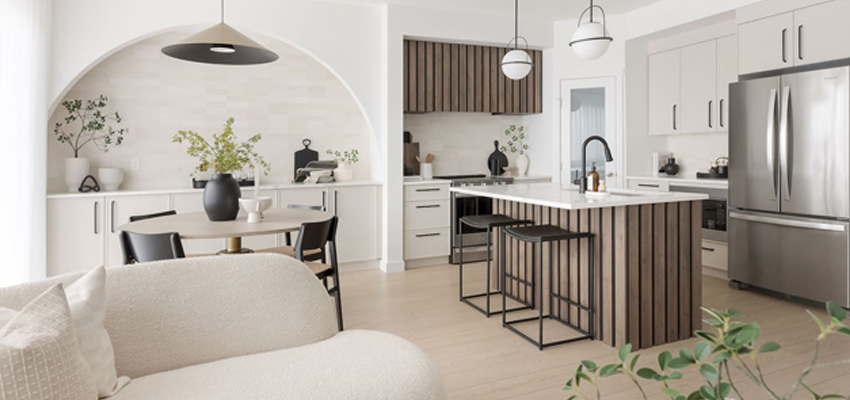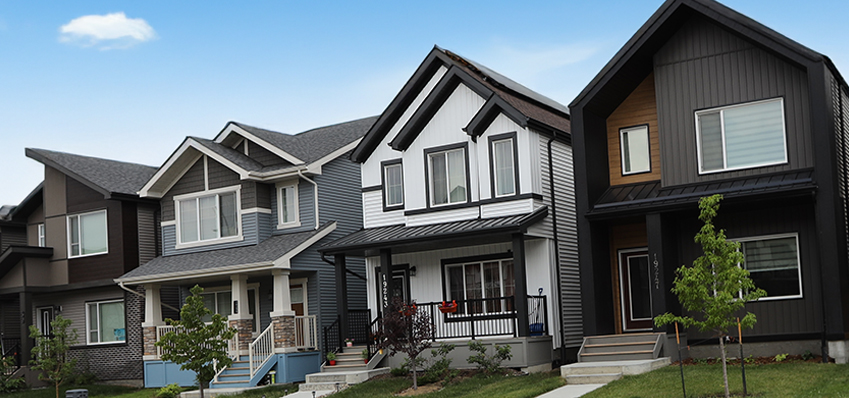Dos and Don’ts for Buying Your Next Home
Perhaps your family has expanded and you’ve outgrown your current home. Or, maybe you’re looking to downsize to something smaller. Whatever the reason, you’ll want to expertly manage all the details — and avoid common pitfalls — as you search for your next home. To help you along the way, here are a few “dos” and “don’ts”.
DO: LOOK BEYOND THE HOUSE
When you’re buying a new home, you’ll want to consider more than just the features inside such as examining the community map. This will help you identify key features in the community and on the lots. You should also take note of the amenities in and around the area, such as schools, shopping, medical centres, recreation facilities, restaurants, and entertainment.
Assess the proximity of a potential home to your family and friends, which will influence how often you can see them. For the sake of your commute, prioritize communities with convenient access to transit, the LRT or major driving routes. If you are a frequent flier, you may want to consider a location in southern Edmonton, for more convenient access to the airport.
DON’T: FORGET TO PLAN FOR HIDDEN EXPENSES
Even the most seasoned home buyer can accidentally overlook some of the expenses associated with a home purchase. The goal is to be prepared and budget accordingly. Here are some additional fees to factor into your plans:
Home Inspection
This is a wise investment, regardless of the age of the home you’re buying. New builds are not immune to potential issues, and an inspection will give you peace of mind. At an average price of $500, a home inspection is money well spent in order to avoid any future (and costly) surprises.
Taxes and Fees
You’ll definitely want to budget for unavoidable costs such as:
- Property taxes: Calculated based on a home’s location and value, these will be approximately $2,000 per year for the average homeowner.
- Land transfer fee: A one-time fee calculated as a percentage of the purchase price of the property.
- Mortgage registration fee: As of October 2024, mortgage registration fees will be calculated at $5 per $5,000 of value, plus a $50 base fee.
Insurance
Mortgage life insurance is optional, but may be required by certain lenders to obtain a loan. This will ensure that the mortgage payments on your home are paid on time if the owner passes away. Even if life insurance is not a requirement for you, purchasing homeowner’s insurance will be critical to protect your new investment and your belongings.
Utilities
If you’re upgrading to a larger home, expect to pay more each month for water, gas, and electricity.
Moving Costs
Request quotes from several moving companies to get a clear understanding of the price parameters. You can also consider loading the items into a shipping pod, which can be picked up and transported.
Appliances
Be sure to confirm with your builder if there is an appliance package included with your new home, and if so, what it entails. Figure out which appliances you’ll need (if any) and do a quick online search to get a ballpark cost for each. Don’t forget to check delivery and installation costs.
Interior and Exterior Modifications
You’ll need to set aside funds for any immediate upgrades or changes you’re planning for your home’s interior interior or exterior landscaping.
DO: CONSIDER DIFFERENT HOME STYLES
If you’re dreaming about having more space, you may be looking for a Single Family home. These are typically single-storey or two-storey homes with a garage attached on the front or separate from the home in a rear lane.
Single Family detached homes are very popular, but they aren’t the only type of house on the market. This is especially true if you’re downsizing. For example, you may find the right solution in a Duplex, which has two separate homes within a single structure. Another highly practical Home Style to consider is a Townhome, with multiple units built in a row. You can expand your view by touring Showhomes and experiencing the different designs and floor plans available.
DON’T: MAKE MISTAKES IN SELLING YOUR EXISTING HOME
Before buying a new property, you’ll need to sell your current home. Be proactive to avoid these common home-selling blunders:
Skipping Necessary Improvements
Potential buyers are turned off when evident improvements are needed in a home. Consider investing in a new roof, furnace, water heater, or carpets. Update any fixtures that are noticeably outdated. The better your house looks, the easier it will be to sell.
Over-Valuing or Under-Valuing Your Home
If you price your home higher than people are willing to pay, your house can end up sitting on the market for months. If you underprice it, you might have a quick sale, but you won’t be receiving the home’s true value. Do some research on the market value of comparable homes in the area.
Selling Too Soon or Too Late
Selling and buying is a delicate balancing act. If you list your existing home too late, you may have to carry two mortgages if it doesn’t sell right away. If you sell too soon, you might not be ready to move when the new owner is ready to take possession. If you buy a brand-new home, you avoid this problem, as the Home Builder will be able to give you a target completion date.
DO: CHOOSE THE RIGHT MORTGAGE
The two broad types of mortgages are fixed-rate and variable-rate loans. Fixed-rate mortgages have a specific interest rate for the life of the loan, whereas variable-rate mortgages have an interest rate that changes periodically. It’s wise to monitor the current interest rates, as they will have a major impact on the home you’re buying (as well as the existing one you may be selling).
Lenders may approve you for a mortgage that is more than you are comfortable paying. Remember, just because you are pre-approved for a certain amount, that doesn’t mean it’s feasible for you. Focus on an amount you know you can afford.
Consider making a larger down payment to reduce the amount you need to borrow. A larger down payment will also help you secure a lower interest rate, further reducing your monthly payment and long-term loan cost.
If your main goal is to keep your monthly expenses as low as possible, you may want to increase your loan term. The longer the loan term, the lower the monthly payments, but the more you will pay in interest over the life of the loan. Loans with shorter terms tend to have lower interest rates.
Whether you’re expanding to a larger home or scaling back to something more manageable, buying your next home doesn’t have to be overwhelming. Keep these tips in mind and you’ll be well on your way to finding your perfect home.



